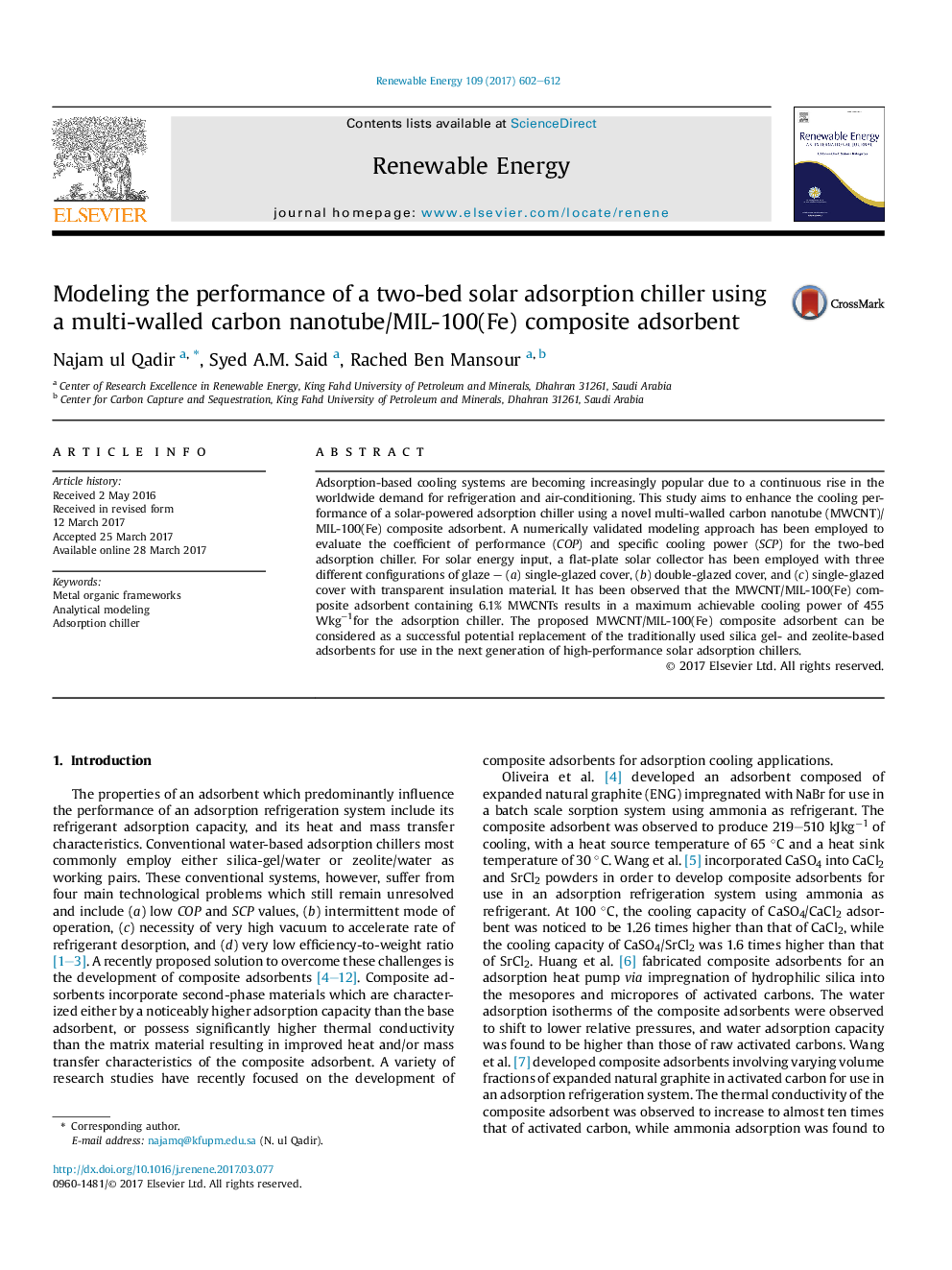| Article ID | Journal | Published Year | Pages | File Type |
|---|---|---|---|---|
| 4926681 | Renewable Energy | 2017 | 11 Pages |
â¢Conventional two-bed adsorption chillers use silica-gels or zeolites as adsorbents.â¢These conventional chillers fail to satisfy household/commercial refrigeration needs.â¢Adsorption chillers with MOFs as adsorbents are expected to show better performance.â¢MWCNTs are nanomaterials with high thermal conductivities and structural perfection.â¢A MWCNT/MOF composite adsorbent has been proposed for solar adsorption chillers.
Adsorption-based cooling systems are becoming increasingly popular due to a continuous rise in the worldwide demand for refrigeration and air-conditioning. This study aims to enhance the cooling performance of a solar-powered adsorption chiller using a novel multi-walled carbon nanotube (MWCNT)/MIL-100(Fe) composite adsorbent. A numerically validated modeling approach has been employed to evaluate the coefficient of performance (COP) and specific cooling power (SCP) for the two-bed adsorption chiller. For solar energy input, a flat-plate solar collector has been employed with three different configurations of glaze - (a) single-glazed cover, (b) double-glazed cover, and (c) single-glazed cover with transparent insulation material. It has been observed that the MWCNT/MIL-100(Fe) composite adsorbent containing 6.1% MWCNTs results in a maximum achievable cooling power of 455 Wkgâ1for the adsorption chiller. The proposed MWCNT/MIL-100(Fe) composite adsorbent can be considered as a successful potential replacement of the traditionally used silica gel- and zeolite-based adsorbents for use in the next generation of high-performance solar adsorption chillers.
